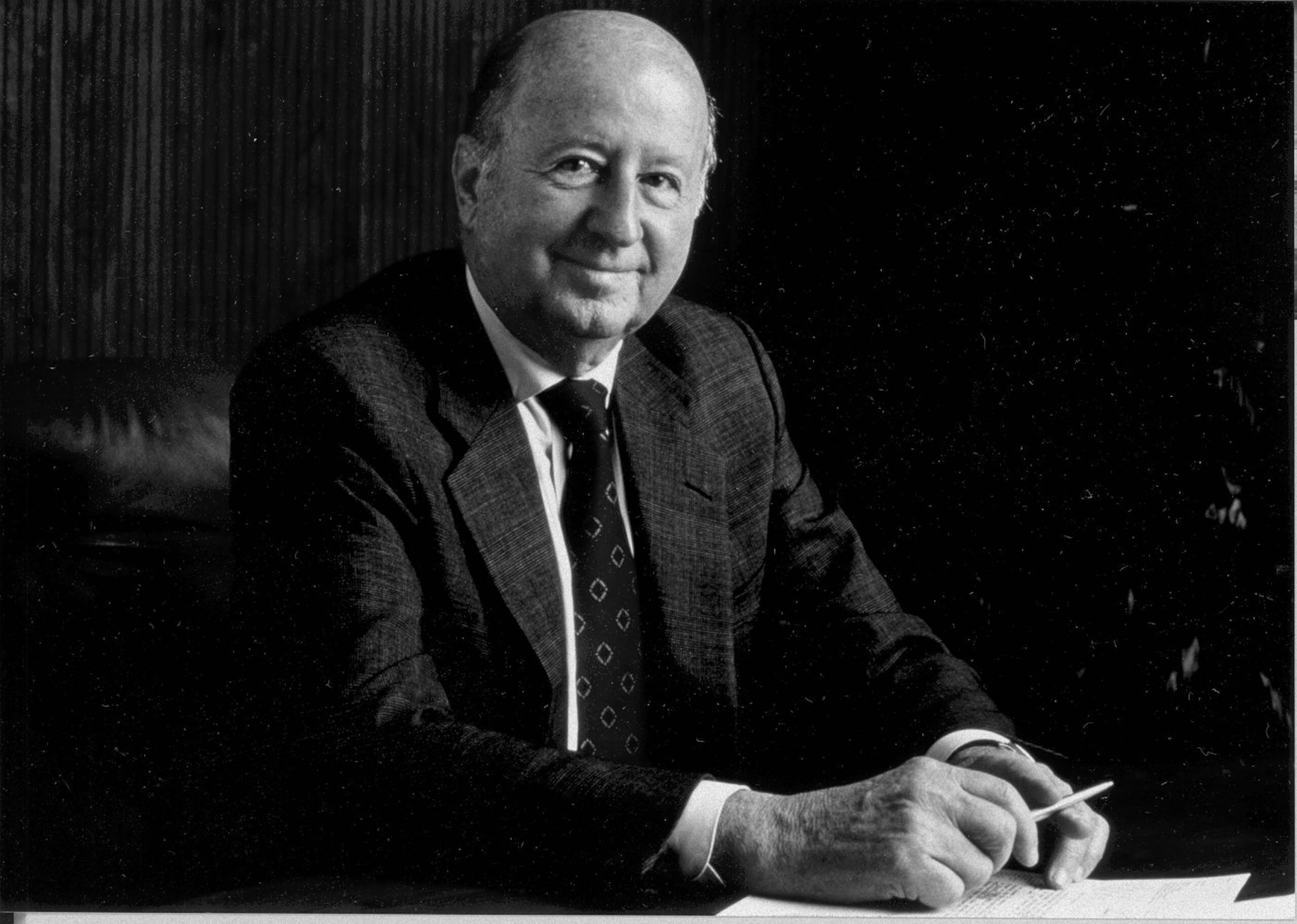How Interfaith First Started In The Woodlands — George Mitchell Knew This Pioneering Community Needed a Force For Good
A Nationwide Search For a Pastor Who'd Bring People Together
BY Laura Landsbaum // 08.24.24Reverend Don Gebert, Interfaith’s first executive director, is shown here with Missy Herndon, the current president and CEO of Interfaith of The Woodlands. (Photo courtesy of Interfaith)
Editor’s note: With The Woodlands’ 50th anniversary almost here, PaperCity is showcasing some of the top stories featured on TheWoodlands.com that bring the first five decades of this pioneering master planned community to life. This is the third story in a new series with PaperCity reporters given an inside look at what shaped and continues to shape The Woodlands.
“The Woodlands Religious Community,” what everyone now knows as Interfaith of The Woodlands, was founded in 1973 by this pioneering master planned community’s own visionary founder George Mitchell. That this took place prior to the official opening of The Woodlands itself in October of 1974 is no coincidence.
Mitchell believed this organization could help bring the new community together.
“(George Mitchell) turned to theologians and philosophers to look at how faith-based organizations with literally thousands of years of community building experience could be harnessed to bring diverse groups together to bridge differences and advance shared values,” George’s son Grant Mitchell says. “Interfaith of The Woodlands is the organization built around that thinking.”
Reverend Don Gebert and his family were brought to The Woodlands after a nationwide search to help start Interfaith. Gebert worked as the associate director of The Philadelphia Foundation, a philanthropic organization distributing funds to local nonprofits and community projects, and Mitchell tabbed him as the natural fit to be Interfaith’s founding executive director in 1975, Joel Deretchin details.
For more than 30 years, Deretchin worked at The Woodlands Development Company, now Howard Hughes.
George Mitchell spent a good amount of time visiting and researching other planned communities, which also included him investigating how the “spiritual side of humans was provided for.” On the East Coast, the religious denominations in Reston and Columbia shared facilities, which was efficient in economies of scale and allowed groups to become better acquainted. But Mitchell felt that in Texas, each church would want to have its own facility.
Gebert set out to support denominations that chose to open churches in The Woodlands, initially providing worship space in the Information Center in Grogan’s Mill Village Center.
“There was a small auditorium with a slide projector, a 16mm film projector and audio capabilities,” Deretchin notes. That site is now the location of a Beck’s Prime.
The Woodlands Development Company worked with religious groups through Interfaith as they planned out the community.
“We included parcels of land into the plan so they would have a space when they were ready for it,” Deretchin says. “Initially, many religious groups didn’t have the funds to build, despite getting a steep discount on the land from the development company.”

Gebert’s mission also centered around bringing people together in fellowship and cooperation. To that end, he set out connecting the newest community members to each other.
“He rode a little motor scooter, not even as big as a Vespa,” Deretchin says. “It had a tall flag so people could see him coming. And he went house to house, welcoming everyone to The Woodlands, serving as a welcome wagon.
“He had this idea that to connect people, he wanted to create a community directory. He’d go around, knock on a door and ask people if they’d mind putting down their names, address and the names and ages of their children.”
Gebert recognized that often newcomers to a community connect through their kids.
That directory grew from a mimeographed sheet to an inch-thick printed directory, complete with advertising that at its height brought in more than a million dollars in revenue to Interfaith for its programs.
Interfaith Quickly Fills Needs In The Woodlands
While Gebert was quick to see needs in the new community, sometimes those needs were presented to him.
“A group of mothers came to Don and said ‘We need a preschool,’ ” Deretchin remembers.
Commercial preschools were not interested in coming to The Woodlands yet, because there weren’t enough rooftops, according to Deretchin, and the churches weren’t ready to offer preschools, as most lacked buildings. So what was then known as The Woodlands Child Development Center was born, offering a Pre-K program with quality education for the kids of the early residents of this new community dubbed The Woodlands.

Under Gebert, Interfaith’s programs continue to help fill needs in the new community. He established a food pantry in The Woodlands, which still provides critical support for local families today. He also started a clothing donation program that has grown into The Hand Me Up Shop which now generates revenue for Interfaith’s support programs.
“It is no coincidence that Interfaith is also celebrating its 50th anniversary,” Grant Mitchell says. “They were brought into the world together with the intention to complement one another. Interfaith is the beating heart at the core of The Woodlands’ social services, offering crucial support to those in need, while providing the social glue necessary for a thriving community.”
Interfaith continues to stand out as a crucial force for good in The Woodlands. Just like George Mitchell always intended.















_md.jpeg)



_md.jpeg)



_md.jpeg)








